|
The “Summer of ’76” was for most Americans a significant and momentous time. It was America’s Bicentennial! Great and wonderful parades and pageants were in the planning for July 4. Sacramento, as California’s capitol, would be the center of much Yankee festivity, speechifying, and politicizing. Festivities were deeply needed. We had just pulled out of Vietnam. It had ripped the nation apart. Watergate. The name is infamous now. It wasn’t that long since. The Cold War was the Cold War. It was still with us. Dystopia was the leading film genre. Every film was telling us how bad it is and how bad it will be. A nuclear Armageddon would be responsible for a new dark age: Logan’s Run, Planet of the Apes, Omega Man, the ultimate dystopia Soylent Green. They prophesied a dismal future. long since. The Cold War was the Cold War. It was still with us. Dystopia was the leading film genre. Every film was telling us how bad it is and how bad it will be. A nuclear Armageddon would be responsible for a new dark age: Logan’s Run, Planet of the Apes, Omega Man, the ultimate dystopia Soylent Green. They prophesied a dismal future.
On top of this there was that strange antiestablishment movement— hippies, drugs, free love, ty-dye, flower power. Behind this there was the daily warning that the Russians were going to get us. It was all so unreal. The younger generation was blaming the elder, but all of us were nostalgic. They didn’t make movies like 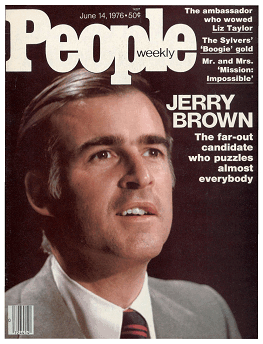 they used to. They didn’t make equipment like they used to. We have to lock our doors now. Crime is rampant. Juan Corona, for God’s sake, buried 20 migrants in an orchard in Grass Valley. The nation still shivered at the Manson Murders. Patty Hearst had been abducted. The Symbionese Liberation Organization was responsible. Who the hell are they? Radicals. Militants. John Wayne, Clint Eastwood, Charles Bronson, had to turn avengers in gritty urban police dramas to even the score. Cars are ugly. Gas is too expensive at 59 cents a gallon. Gahd, disco. Silver-blue permed grandmothers warned us that America was going to hell in a wheelbarrow. “Roosevelt, now there was a president!” they used to. They didn’t make equipment like they used to. We have to lock our doors now. Crime is rampant. Juan Corona, for God’s sake, buried 20 migrants in an orchard in Grass Valley. The nation still shivered at the Manson Murders. Patty Hearst had been abducted. The Symbionese Liberation Organization was responsible. Who the hell are they? Radicals. Militants. John Wayne, Clint Eastwood, Charles Bronson, had to turn avengers in gritty urban police dramas to even the score. Cars are ugly. Gas is too expensive at 59 cents a gallon. Gahd, disco. Silver-blue permed grandmothers warned us that America was going to hell in a wheelbarrow. “Roosevelt, now there was a president!”
The Bicentennial was indeed deeply needed.
I considered myself now to have been a typical American boy of 10 years old. I had a classy and gracious Midwest mother. Her mother and father were straight out of Dorothy’s farm in Kansas (though in this case Colorado and a bit more international in background). They had escaped Czarist Russia as the empire was collapsing. All my friends in my native Gilroy seemed the same. Midwesterners had moved west with the Great Depression or, after WWII, those discharged out here had had a nice taste of California and decided to stay, like Mom. Kids, like me, this Generation X, thought this was California culture— Midwest parents on one side, often Europeans on the other side. And perhaps this indeed was California culture at the time.
However much the 1970s may be disparaged by many critics and pundits, it is forever ingrained in Generation X. Because of the forlorn nostalgic attitude of that decade, we did not take the stark changes for granted. Rather, I think my generation constantly compared. Our grandparents were more formal, with a sense of proportion. Classic films daily reenforced within us a recent era in which class, propriety and style, often very uniform, was the public norm. Our parents and grandparents still reflected this, only to a more relaxed degree now. But it was forever there. In contrast there was our older siblings and cousins, the strobing Baby Boomers.
The antiestablishment movement’s attitudes were now entering the mainstream. The funky look of the late ’60s was gone. The ashrams and gurus were replaced by a hybrid Main Street, at least for the younger. Bell bottoms, tight hip huggers, long hair, peace symbols, and a broad attitude about sex. It was the “Swinging ’70s.” Peace, brother. “I’d like to teach the world to sing in perfect harmony . . .” and then that damn coke bottle was raised to sell the product. Corporate America was in swing too! The Love Boat got a “C” rating from the Catholic Church, which boosted ratings when every Catholic tuned in to see what it was about. Morality was loose. Things were raunchy. Today some of this may seem “corny,” but back then to a staid, earlier generation this was all shocking. for the younger. Bell bottoms, tight hip huggers, long hair, peace symbols, and a broad attitude about sex. It was the “Swinging ’70s.” Peace, brother. “I’d like to teach the world to sing in perfect harmony . . .” and then that damn coke bottle was raised to sell the product. Corporate America was in swing too! The Love Boat got a “C” rating from the Catholic Church, which boosted ratings when every Catholic tuned in to see what it was about. Morality was loose. Things were raunchy. Today some of this may seem “corny,” but back then to a staid, earlier generation this was all shocking.
We must also remember the context. Urban areas were a shambles. Cities were broke. Our grandparents remembered the building of the Empire State Building and many other feats of engineering. 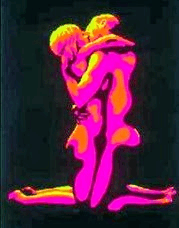 Now the cites were strewn with litter. White flight had occurred, and cities were spreading out and leaving the old and more exotic core of the urban areas to winos and drug dealers. New buildings were glass, glass squares, artless boxes. They looked cheap. The disaster flicks fed on this. The Towering Inferno happened because of greedy corner-cutting. There seemed no hope. The future was speaking a funny language— foxy, fuzz, far out— and forever militant and engaging in lewd relationships. Now the cites were strewn with litter. White flight had occurred, and cities were spreading out and leaving the old and more exotic core of the urban areas to winos and drug dealers. New buildings were glass, glass squares, artless boxes. They looked cheap. The disaster flicks fed on this. The Towering Inferno happened because of greedy corner-cutting. There seemed no hope. The future was speaking a funny language— foxy, fuzz, far out— and forever militant and engaging in lewd relationships.
There was still an establishment, though. Main Street business modified the extremes. Lapels were side— real wide— on men’s suits. Ties were wide, sideburns long and full, pants were polyester. “70s fashion” is a big word and a bigger oxymoron. Young guys were shedding the wild hippie hair and now discovering feathered shags and parts in the middle. Hair Spray! Girls didn’t have the straight natural hair so prominent in the early ’70s with its “go natural” theme. Fashion was reemerging.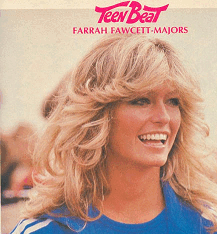 Farrah Fawcett gave us a compromise from the heavily coifed beehives and long, straight hair. It would be the ultimate hairdo for young women of the 1970s. No other type of beauty but Farrah Fawcett’s would have been acceptable in a decade that mocked pretension. After all, this was the decade in which Christy McNichol, the ultimate tomboy, was a teen idol. Farrah Fawcett gave us a compromise from the heavily coifed beehives and long, straight hair. It would be the ultimate hairdo for young women of the 1970s. No other type of beauty but Farrah Fawcett’s would have been acceptable in a decade that mocked pretension. After all, this was the decade in which Christy McNichol, the ultimate tomboy, was a teen idol.
There is much more to it than looks and some loose attitudes. There was women’s lib, bra burning (good heavens!), call your parents by their first name— rot! Divorce! My Gahd, there was now divorce. Churches were accepting divorce. The fiber of the American family, and with this civilization, was coming apart. Hal Lindsey electrified everybody with Late Great Planet Earth.
My Oma didn’t leave her house without looking like the Queen Mother on parade. Her silver-blue perm was perfect. Great pearls crouched on her earlobes. A string was about her neck. Her heels were 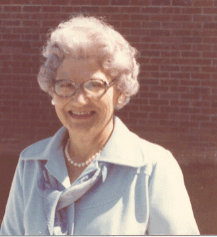 firmly pressed together, as if congenitally heel-clicking, befitting one of her great Prussian heritage. Like so many other Edwardian babies, she was shocked to her Prussian toes. A woman’s place was in the home, this unspeakably overbearing matriarch would declare before she ordered her husband around. firmly pressed together, as if congenitally heel-clicking, befitting one of her great Prussian heritage. Like so many other Edwardian babies, she was shocked to her Prussian toes. A woman’s place was in the home, this unspeakably overbearing matriarch would declare before she ordered her husband around.
Millions of veterans from World War II, and indeed many from World War I, were still with us. We knew those were the glory days. But they were black and white and seemed so long ago. Our WWII uncles and parents were in their 50s now. Wow! They reminded us you can’t trust the Krauts, the Japs, the Commies, the Pinkos, Chinks, Gooks. We had freed the world and were holding back the red hordes and now we were losing because of gas wars and cheap competition. They refused to buy those rinky dink Japanese cars. What were they called? Toyota? Didn’t we bomb a ship or a city named that? They would not buy them. “See the USA in your Chevrolet.” Don’t tread on me.
The ’70s were an interesting time, this is certain. We knew we had progressed— sweat shops at the beginning of the century and sin to show your ankles (for women)— but had we now gone too far? Were we like an airplane rising above its ceiling? Were we waffling and would we soon break apart? Many felt this way. A grand and staid culture— Victorian grandparents, The Great Generation as parents, both were bewildered at what Baby Boomers had been doing for the last 9 years. 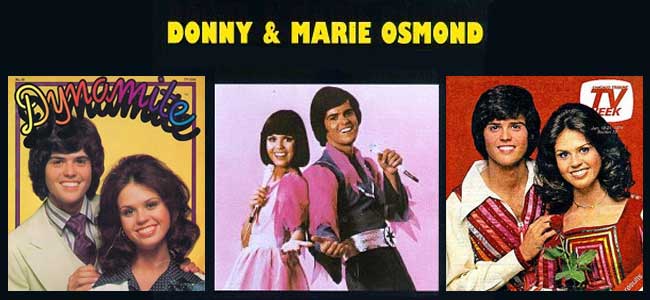
But we, Generation X, were the snotnoses. We weren’t to blame. Our older siblings, our older cousins did it. But, naturally, we came to be warned by our grandparents lest we follow. Oma would be clear that judgment day comes to us all. “Bereistest dich vor!” And another stirring one we couldn’t figure out: “Wir mussen alles gehen!” It wasn’t necessary. At 10, 12 years old, we were the perfect observers for the changes going on about us. Needless to say, we could see how funky the ’70s were. But the past was better. Bogey was cool. Technicolor was grand. Pants with pleats were awesome. 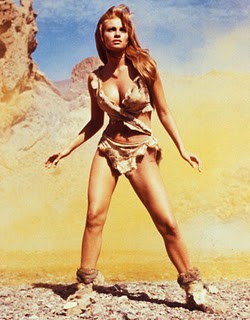 Everything did seem better in the past. The present lacked class, Technicolor, and grandeur. Things were “cheesy.” Polyester. That’s the word. Nothing was made like it used to be. Raquel Welch as a cavewoman. That tells you everything. Everything did seem better in the past. The present lacked class, Technicolor, and grandeur. Things were “cheesy.” Polyester. That’s the word. Nothing was made like it used to be. Raquel Welch as a cavewoman. That tells you everything.
It is interesting to think back and remember how we used to think. We thought ourselves so long removed from the golden age of our parents and grandparents, but we were truly quite close to it all. How did all this happen in only 30 years since WWII? The answer to that question would probably best explain many of the events that happened in the 1970s. They were the product of attitudes which in turn were influenced by the era’s unique juxtaposition. But it is beyond the scope of this article and this crime spree which it introduces to speak in depth of those. I present change here by its appearance in relation to what had been.
But though they seemed old to us, that Golden Age would lead us in the Summer of ’76. Amidst Afro hairdos and long hair on band musicians, Kate Smith would lead the celebrations with a rousing rendition of God Bless America. Thousands, if not hundreds of thousands, who had landed at Normandy were still with us. General Omar Bradley, who led the landings, participated in the celebrations. Despite the 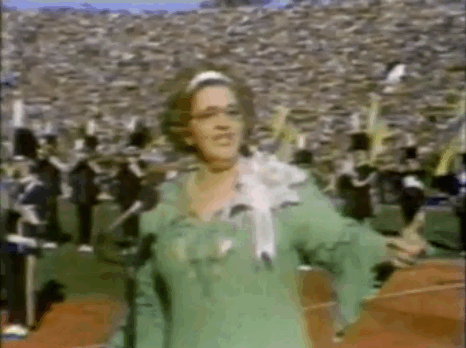 social upheavals, Cold War fears, Americans were still proud to be Americans and fancied themselves quite unique. Many agreed with General Alexander Haig: “Rather be dead than Red.” social upheavals, Cold War fears, Americans were still proud to be Americans and fancied themselves quite unique. Many agreed with General Alexander Haig: “Rather be dead than Red.”
I look now, as I write this, upon our Franklin Mint special commemorative Bicentennial Bowl. Gold trimmed, with pictures in cameo all around it celebrating, as I turn it now, Washington crossing the Delaware, Paul Revere’s ride, signing of the Declaration of Independence, the crucible of Valley Forge, and many others. I remember when it arrived in 1976. Mom set it upon the maple bureau. There it still sits. Now as I discover it anew I turn it over to read what is says. It is actually the Danbury Mint Bicentennial Bowl, design based on Paul Revere’s “Sons of Liberty Bowl.” How wonderful! It is a part of a limited edition issued to commentate America’s Bicentennial. Hand decorated and trimmed in 22 kt gold. “Made in Bavaria.”— Bavaria? What the hell, is nothing made in the USA anymore?
. . .Well, what a throwback to the ’70s attitude! But this was my America. It was the America of my generation. Divided, nostalgic, proud, insulated, angry, in the wake of the culture shattering antiestablishment movement, plunged in the fears of the Cold War and the bitterness of Vietnam. It was a different era, much more than anytime before. But the Great Generation still led us, shaking its head at the younger generation. Much more tolerant than I think we are today.
There was good reason for an earlier generation to lament how things had changed. There was a lot that was bad and dark in the new America. With America in a free fall of casting off old morals there came something else. It is not surprising that crime, itself the product of nonconformists, became even more bold. Murder wasn’t so rare anymore. It wasn’t about knocking off old Aunt Alice in order to get the family fortune. Serial killers hunted their victims and made a thrill game out of killing. But it wasn’t the classic urban or tenderloin variety anymore, where predators stalked the Strip and picked off prostitutes. The Zodiac Killer had attacked Johnny and Suzie Q. Citizen, your average American teenager or 20 something, at petting spots. He made a big publicity campaign about it. Supposedly Juan Corona buried 20 migrants in an orchard near Grass Valley. He is the first to break the 20 mark in victims. A couple of guys were going berserk in Texas. They would break the 25 mark. College girls were vanishing. Soon Bundy would be active. There was that damn Unibomber.
Amidst all these serial crimes a new type of crime spree was about to happen. A rapist was afoot. More than a rapist. He was a strategist of assault. The victims weren’t passing in time. They were carefully stalked as prey. The average, decent American girl was the target. They weren’t at remote necking spots. Their homes were stalked. Their neighborhood was the campaign board.
It all began in an unlikely place, in the bedroom community of Rancho Cordova, one of the eastern unincorporated suburbs of Sacramento. It was the Summer of ’76.
|